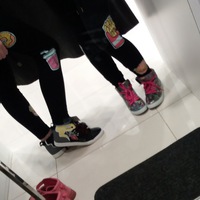
Спам = -мать Закончи уравнения реакций: K + HOH = KOH + ……. Zn + S = ……… Mg + HCl = …….. + H2
Ca + CuCl2 = ………….. + ………. Окислители или восстановители металлы в этих реакциях? Дай объяснение. 0
0
 0
0
Ответы на вопрос
 Внимание! Ответы на вопросы дают живые люди. Они могут содержать ошибочную информацию, заблуждения, а также ответы могут быть сгенерированы нейросетями. Будьте внимательны. Если вы уверены, что ответ неверный, нажмите кнопку "Пожаловаться" под ответом.
Внимание! Ответы на вопросы дают живые люди. Они могут содержать ошибочную информацию, заблуждения, а также ответы могут быть сгенерированы нейросетями. Будьте внимательны. Если вы уверены, что ответ неверный, нажмите кнопку "Пожаловаться" под ответом.

Ответ:
Объяснение:
2K + 2H2O = 2KOH + H2
K(0) -1e = K(+)
в-ль
Zn + S = ZnS
Zn(0) -2e = Zn(+2)
в-ль
Mg + 2HCl = MgCl2 + H2
Mg(0) -2e = Mg(+2)
в-ль
Ca + CuCl2 = CaCl2 + Cu
Ca(0) -2e = Ca(+2)
в-ль
Cu(+2) +2e = Cu(0)
ок-ль
 0
0
 0
0

Ответ:
2K + 2H2O = 2KOH + H2
K(0) -1e = K(+)
в-ль
Zn + S = ZnS
Zn(0) -2e = Zn(+2)
в-ль
Mg + 2HCl = MgCl2 + H2
Mg(0) -2e = Mg(+2)
в-ль
Ca + CuCl2 = CaCl2 + Cu
Ca(0) -2e = Ca(+2)
в-ль
Cu(+2) +2e = Cu(0)
Объяснение
Вроде так
 0
0
 0
0

Balanced Equations and Identification of Oxidizing and Reducing Agents
To answer your question, let's balance the given chemical equations and identify the oxidizing and reducing agents in each reaction.
1. K + HOH = KOH This equation represents the reaction between potassium (K) and water (HOH) to form potassium hydroxide (KOH). The balanced equation is: 2K + 2HOH = 2KOH In this reaction, potassium (K) is the reducing agent, as it donates electrons to the water molecules, causing them to be reduced. Water (HOH) acts as the oxidizing agent, as it accepts electrons from potassium, causing it to be oxidized.
2. Zn + S = ZnS This equation represents the reaction between zinc (Zn) and sulfur (S) to form zinc sulfide (ZnS). The balanced equation is: Zn + S = ZnS In this reaction, zinc (Zn) is the reducing agent, as it donates electrons to sulfur, causing it to be reduced. Sulfur (S) acts as the oxidizing agent, as it accepts electrons from zinc, causing it to be oxidized.
3. Mg + HCl = MgCl2 + H2 This equation represents the reaction between magnesium (Mg) and hydrochloric acid (HCl) to form magnesium chloride (MgCl2) and hydrogen gas (H2). The balanced equation is: Mg + 2HCl = MgCl2 + H2 In this reaction, magnesium (Mg) is the reducing agent, as it donates electrons to hydrogen ions in the hydrochloric acid, causing them to be reduced. Hydrochloric acid (HCl) acts as the oxidizing agent, as it accepts electrons from magnesium, causing it to be oxidized.
4. Ca + CuCl2 = CaCl2 + Cu This equation represents the reaction between calcium (Ca) and copper(II) chloride (CuCl2) to form calcium chloride (CaCl2) and copper (Cu). The balanced equation is: Ca + CuCl2 = CaCl2 + Cu In this reaction, calcium (Ca) is the reducing agent, as it donates electrons to copper(II) ions in the copper(II) chloride, causing them to be reduced. Copper(II) chloride (CuCl2) acts as the oxidizing agent, as it accepts electrons from calcium, causing it to be oxidized.
In summary, the metals in these reactions act as reducing agents, as they donate electrons, while the non-metals or compounds containing non-metals act as oxidizing agents, as they accept electrons.
 0
0
 0
0
Похожие вопросы
Топ вопросов за вчера в категории Химия
Последние заданные вопросы в категории Химия
-
Математика
-
Литература
-
Алгебра
-
Русский язык
-
Геометрия
-
Английский язык
-
Химия
-
Физика
-
Биология
-
Другие предметы
-
История
-
Обществознание
-
Окружающий мир
-
География
-
Українська мова
-
Информатика
-
Українська література
-
Қазақ тiлi
-
Экономика
-
Музыка
-
Право
-
Беларуская мова
-
Французский язык
-
Немецкий язык
-
МХК
-
ОБЖ
-
Психология
-
Физкультура и спорт
-
Астрономия
-
Кыргыз тили
-
Оʻzbek tili



























